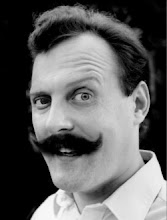Filmmaking - Format
Peeved filmmakers ask, "How can I afford to shoot 'Real Film?'"
I shoot mostly 35mm four-perf, flat or scope, but I have shot
VistaVision (8-perf 35mm going sideways) and 5, 8, and 15-perf
65mm. (Todd-AO, Dynavision, Imax). I have a 65mm camera I built
that will pull those formats. I shoot 4x5 and 8x10 stills in
negative and transparencies. So I know a little about it.
I love film, it's the real deal, just needs more guys on the crew
to carry everything. Oh, and a truck.
I've shot a lot of Super 8mm and 16mm, but only for the grainy
effect. I blow those up on my optical printer. I don't shoot
small-formats or video to make a movie on. My movies are 35mm, as
God and Tom Edison intended, so I can show them in any theatre
anywhere in the world.
Expensive? Not really, your customers pay for it. It's only
money. 35mm can be sold, so expense is deductible, the cost of
doing business. I shoot video too, good luck selling it for a
decent price.
Perception of value for film is very high, so you can ask a high
price. Mention your production is digital to a distributor, you
might as well say you are giving it away.
He's read all the stupid articles, how it don't cost nothin' to
make digital, so that's what he figures you spent, and that's
what he offers you. (Never tell anybody your real budget, for the
same reason.)
35mm stock is about half a buck per foot, retail. Processing is
about .20/ft. You can buy short ends and recans for about half
that, or make deals for lower prices. You can even buy chemicals
and a processor and bypass the lab, there's a whole used market.
I build cameras, so I buy cameras and hotrod them, but that's
just me. I'm restoring a reflexed early Mitchell BNC right now,
and it's delightful. All the high-tech stuff is on the film
emulsion. Put new film in it, and you're on a par with anybody,
you just upgraded your 1938 camera to 2007. 10X resolution of HD.
I stay well-connected to raw stock people, and never pay retail.
I pay about .09/foot. 50,000' for a feature's worth costs me
about $4500. You can find a raw stock source like that on IndyCine.
Lab costs can be cheaper than 16mm because they do so much more
in 35mm than 16mm, and the lab treats you much better when you're
a 35mm customer.
That's getting worse, too. Last couple of 16mm projects run
through a lab (Hollywood and Seattle, both used to be good,
how the mighty are fallen. Best are now DuArt, NY and
Fotokem, Burbank.) had all kinds of dirt on them, and the
lab "just couldn't figure it out." I can - use clean chemicals!
Here's a great interview Audio CD on the subject.
I make a print and a window dub. I rough-cut on my mac FCP, then
conform my print and do screenings, in theatres and my editing
room. (My Cinemonta 8-plate flatbed table can project a big,
bright image onto my white wall.)
Based on audience reaction, I do the fine-cut on film, and
conform the negative. Video is tweaked, matched to my print.
Good luck!
Sam Longoria
filmmaking
Sunday, December 17, 2006
Friday, December 15, 2006
Beatles For Christmas
Filmmaking
Happy Christmas, Merry Krimble, and a Happy Goo Year!
Six reasons why I love the Beatles:
John, Paul, George, Richard, George, Richard.
Even just goofing around, they were still the best.
This includes a number cut from "A Hard Day's Night."
Anybody know where I can reach Richard Lester?
Any contact info gratefully accepted.
Filmmaking
Happy Christmas, Merry Krimble, and a Happy Goo Year!
Six reasons why I love the Beatles:
John, Paul, George, Richard, George, Richard.
Even just goofing around, they were still the best.
This includes a number cut from "A Hard Day's Night."
Anybody know where I can reach Richard Lester?
Any contact info gratefully accepted.
Filmmaking
Subscribe to:
Posts (Atom)
